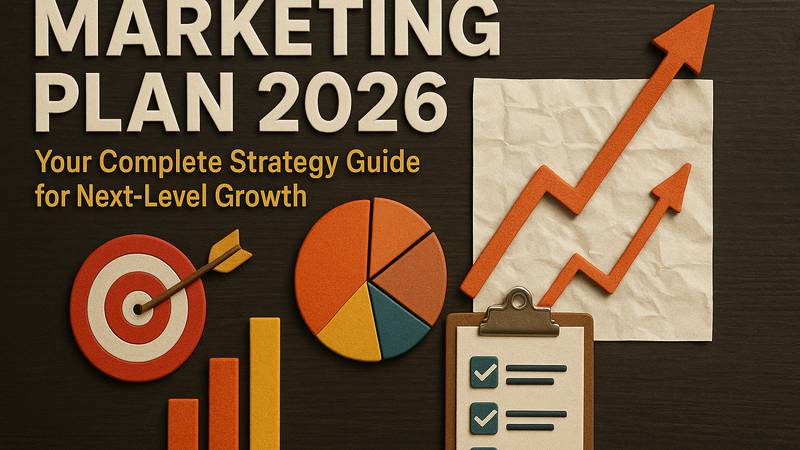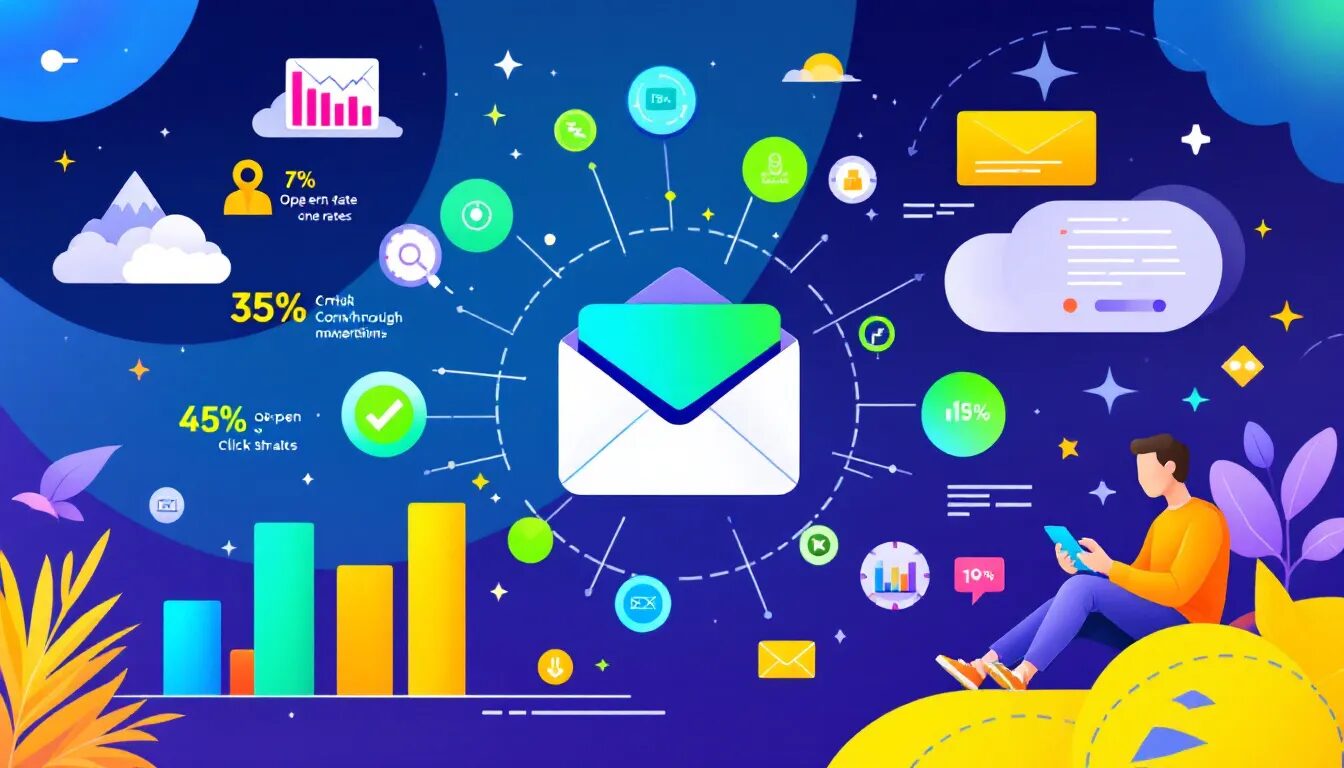
What is Email Marketing? Your Comprehensive 2025 Guide
Email marketing is a strategy where businesses use emails to communicate with customers and prospects. It aims to build relationships, promote products, and increase sales. This article will explain what is email marketing, its different types, and how to use it effectively.
Key Takeaways
- Email marketing is a cost-effective digital strategy that fosters customer loyalty, enhances brand visibility, and drives sales through personalized communication.
- There are four main types of email marketing campaigns: newsletters, welcome emails, promotional emails, and transactional emails, each serving specific marketing goals.
- Key benefits of email marketing include high ROI, the power of personalization, and the ability to measure campaign performance accurately, all contributing to long-term customer engagement.
Understanding Email Marketing
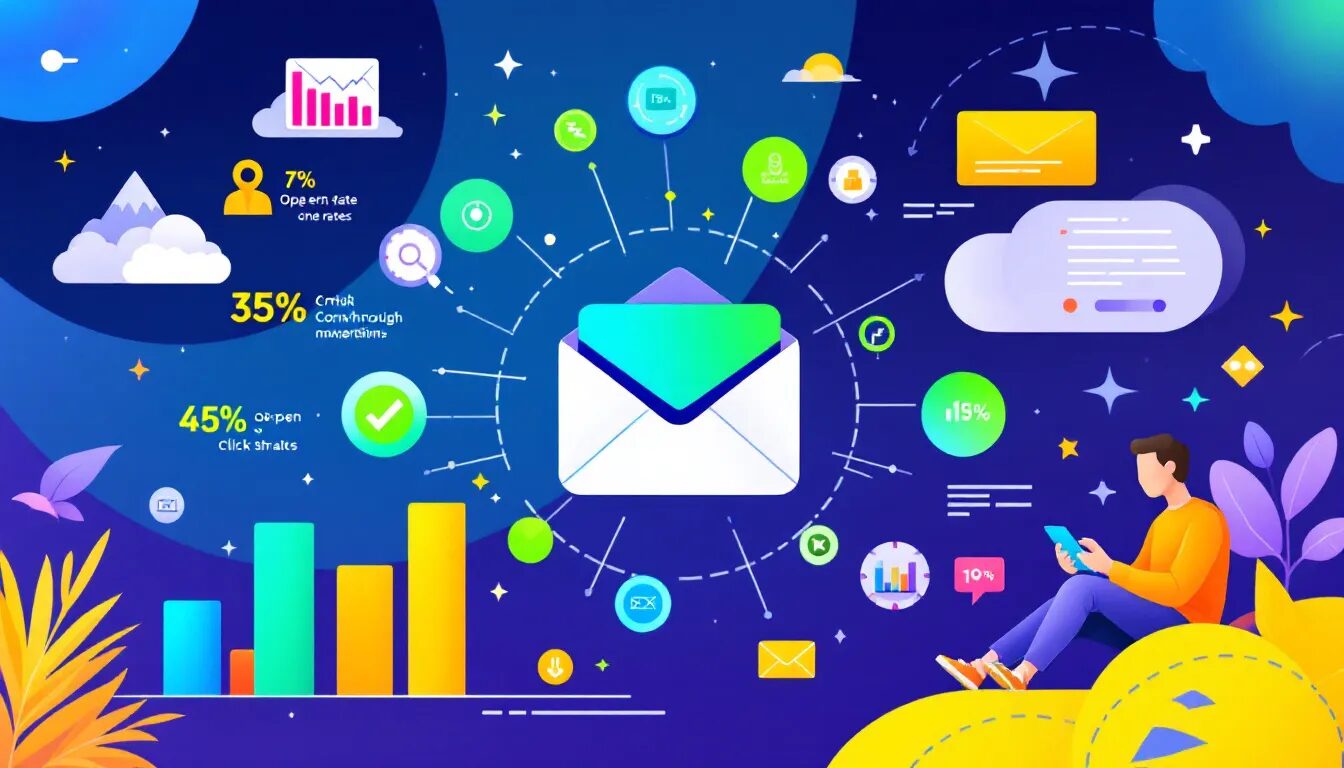
Email marketing is a digital strategy that uses email to connect with both existing and potential customers. The main objective of email marketing is to nurture customer loyalty and attract new customers through direct marketing communication. Businesses leverage it to deliver advertisements, solicit business, and foster relationships, thereby encouraging repeat business as part of their email marketing strategy.
Email marketing has evolved significantly over the years. From the early days of mass marketing emails to today’s highly targeted and personalized messages, technological advancements have greatly enhanced its effectiveness. Today, email marketers focus on creating meaningful connections with your audience and maintaining brand visibility through consistent communication as an email marketer using an email marketing service.
Consumers prefer email as a method of communication from companies, which makes it an effective way to increase brand visibility. By delivering relevant content directly to your audience’s inbox, you can enhance communication, build trust, and maintain a strong presence in your subscribers’ minds through email service providers.
Types of Email Marketing Campaigns
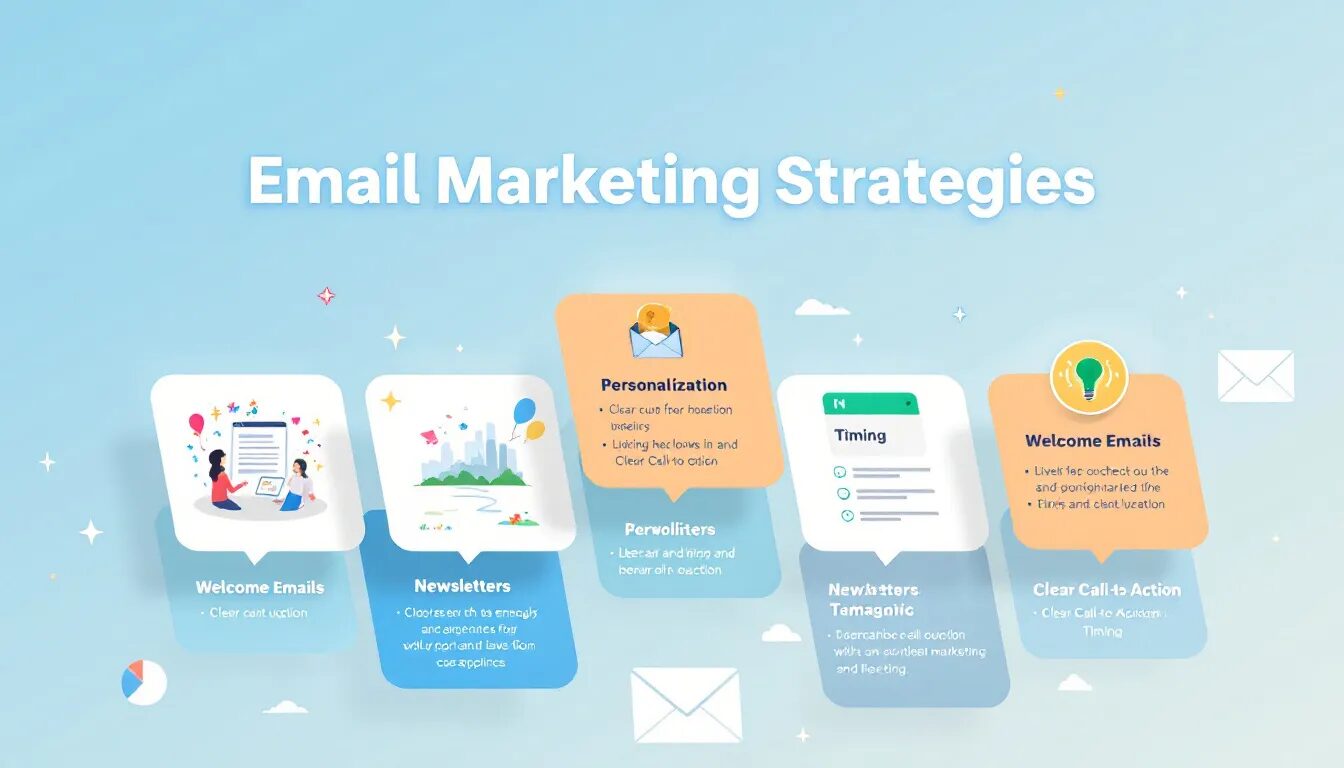
Email marketing campaigns come in various forms, each designed to achieve specific marketing goals. The four fundamental types of email marketing campaigns are:
- Newsletters
- Seasonal emails
- Welcome emails
- Re-engagement emails
Each type of campaign plays a crucial role in building customer relationships and driving sales.
This guide will delve into the various types of email campaigns, including welcome emails, newsletters, promotional emails, and transactional emails, highlighting their purpose and best practices.
Welcome Emails
Welcome emails are the first messages sent to new subscribers to introduce the brand, set the tone for future communications, and boost engagement. These emails are crucial because they create the first impression and can significantly impact future interactions. Key elements of a welcome email include a brand introduction, setting expectations, and adding a personalized touch to make the subscriber feel valued.
Highlight your unique selling points and offer incentives like discount coupons in welcome emails to encourage immediate engagement and re engage existing customers. Using psychology-backed strategies, such as creating a sense of belonging or urgency, can further improve their effectiveness.
Newsletter Emails
Newsletter emails provide regular updates that share business news and valuable content with subscribers, helping maintain contact with existing customers and drive website traffic. Newsletter campaigns are typically distributed weekly, bi-weekly, or monthly and focus on one main topic.
An engaging newsletter should feature relevant content that resonates with readers, have a visually appealing design, and include clear calls to action. Different types of content such as event announcements, guides, and customer stories can make your newsletters more engaging. Additionally, newsletters are an excellent way to announce company updates, product releases, service changes, and other important messages.
A successful newsletter should align with your overall marketing strategy and be distributed consistently to maintain engagement. Providing valuable information along with promotional content in newsletters can enhance customer loyalty and keep your audience informed.
Promotional Emails
The primary purpose of promotional emails is to drive sales through promotions. These emails often create a sense of urgency to encourage immediate action from recipients. A typical promotional email includes a clear call-to-action (CTA) to guide recipients toward making a purchase or taking another desired action.
Promotional emails serve various purposes, such as reminding customers of abandoned carts or announcing deals and seasonal marketing emails. These commercial messages are often sent more frequently during crucial periods like holidays to maximize sales opportunities.
Transactional Emails
Transactional emails are automated emails triggered by customer actions like purchase confirmations and confirmation emails for password resets. These transactional messages offer essential, personalized touchpoints that enhance the customer experience and build trust.
Since recipients expect transactional emails, they generally have higher open rates compared to other types of emails. Adding relevant promotions or additional information in these emails can further engage your audience and drive extra sales.
Key Benefits of Email Marketing
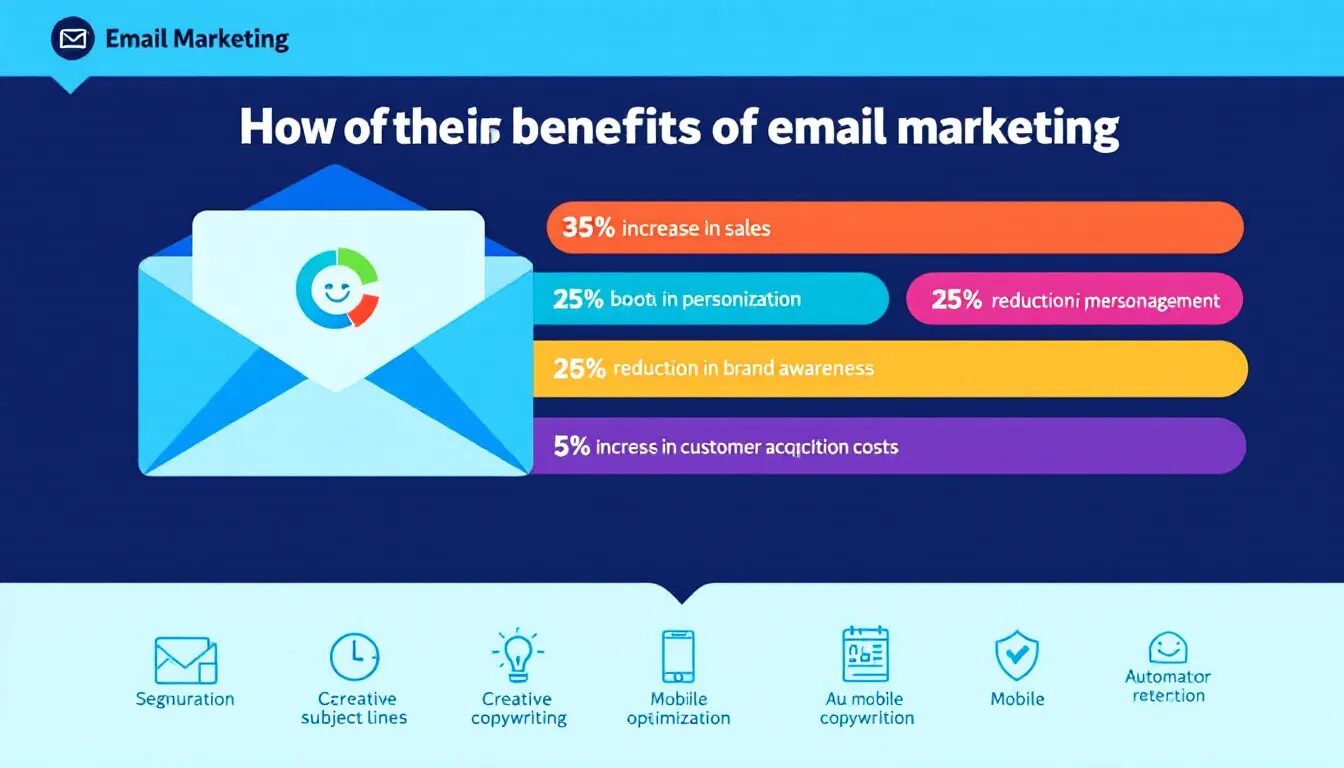
Email marketing offers numerous benefits, including cost-effectiveness, high return on investment (ROI), and fostering lasting customer loyalty. These benefits make email marketing a powerful tool in any marketing strategy.
In the following sections, we will delve into the key benefits of email marketing, including its high ROI, the power of personalization, and the ability to measure results accurately.
High ROI
Email marketing is renowned for its high return on investment (ROI), with businesses often seeing a return of $36 for every $1 spent. Its affordability makes it one of the most cost-effective digital marketing channels, contributing significantly to email marketing revenue.
Segmented and targeted emails greatly contribute to this high ROI, generating 58% of email revenue. Focusing on a specific audience and delivering relevant content to the target audience can lead to impressive returns.
Personalization
Personalization is a key strength of email marketing. Tailoring content to individual subscribers based on their preferences and behaviors can substantially increase open rates, click-through rates, and conversion rates. Personalized emails help build relationships with prospects and customers, making them feel valued and understood.
Dynamic content and marketing automation email automation enable marketers to deliver highly relevant and valuable content to various subscriber segments. This deeper connection with subscribers fosters loyalty and drives long-term engagement.
Measurable Results
A major advantage of email marketing is its measurability. Marketers can track key metrics like open rates, click-through rates, conversion rates, ROI, bounce rates, and unsubscribe rates to gauge campaign success. These email marketing metrics provide valuable insights into audience engagement and help optimize future campaigns.
Email marketing platforms and website analytics tools facilitate monitoring and analyzing campaign performance using google analytics and email marketing tools. Understanding what works and what doesn’t allows marketers to continuously refine their strategies for better results with mobile marketing and email marketing software.
How to Start with Email Marketing
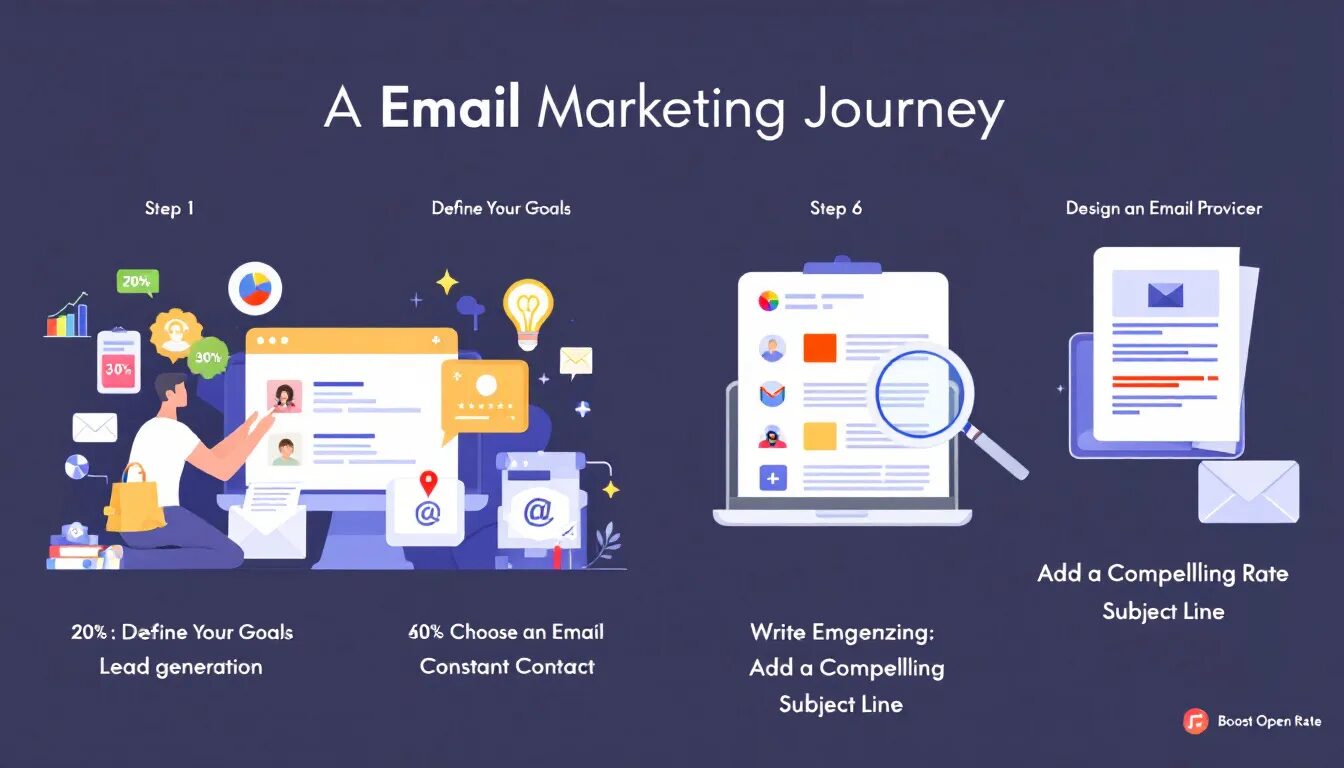
Starting with email marketing involves defining your audience and goals, building your email list, choosing an email marketing platform, and crafting effective emails. Understanding your audience’s preferred communication style and timing is also crucial.
This guide will walk you through each step in detail, offering practical tips and strategies to help you launch a successful email marketing campaign.
Building Your Email List
Building an email list is a crucial first step. Using organic methods ensures you attract subscribers who are genuinely interested in your content. Sign-up forms, popups, social media posts, and downloadable resources are effective for collecting email addresses.
Offering valuable incentives like discounts or exclusive content encourages more email subscribers. A double opt-in process confirms subscriber interest, maintaining a healthy and engaged email list.
Regularly reviewing and cleaning your email list maintains high deliverability and engagement rates. Regularly remove inactive subscribers and keep your list updated to improve overall campaign performance.
Choosing an Email Marketing Platform
Selecting the right email marketing platform is vital for effective campaign management. Evaluate platforms based on features, integration capabilities, and pricing models to find one that fits your business needs and scales with growth.
Popular platforms like Brevo offer budget-friendly options. For instance, Brevo’s Starter Plan costs $9 for 5,000 emails per month, making it accessible to businesses of all sizes. Their Free Plan includes core features, allowing users to test the platform before committing.
Crafting Effective Emails
Crafting effective emails is crucial for a successful campaign. The email subject line, a critical element, directly impacts open rates. Eye-catching and engaging subject lines significantly increase the chances of your emails being opened.
The structure of the email template is also important. Using the inverted pyramid model, emails should have a succinct headline, supporting information, visuals, and a clear call to action. Responsive design ensures emails look great on all devices, boosting engagement.
Visuals make emails more eye-catching and memorable. Including images, graphics, and other visual elements enhances the reader’s experience and increases the likelihood of them taking the desired action.
Email Marketing Best Practices
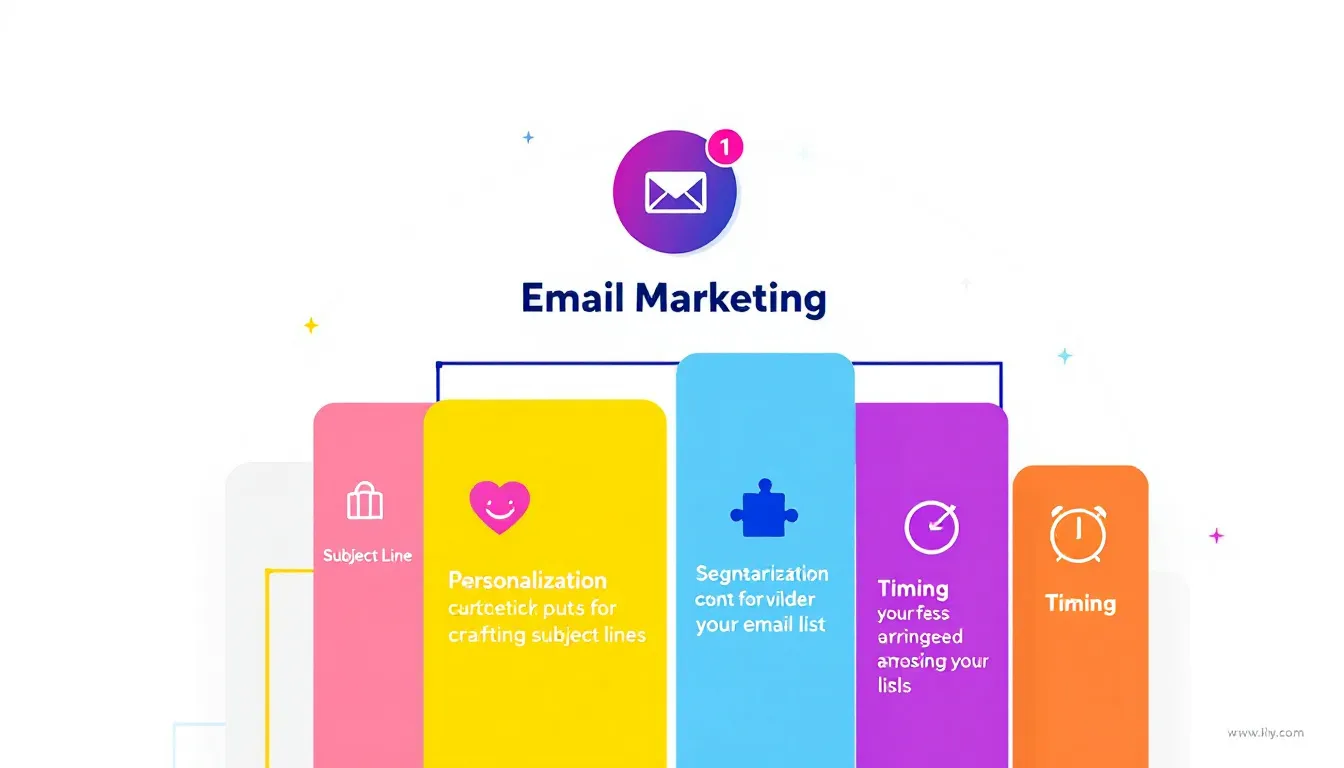
Following best practices is crucial for successful email marketing campaigns. Aligning your email list, email service provider (ESP), and marketing goals ensures a strategic approach. Timing emails based on a promotional or editorial calendar can boost engagement.
Monitoring campaign metrics and optimizing calls to action can significantly improve click-through rates. Balancing email frequency is essential to keep subscribers engaged without causing email fatigue.
Segmenting Your Audience
Segmenting your email list means dividing subscribers into smaller sub-lists based on common traits. This allows you to tailor your content more effectively, increasing relevance and engagement. Granular segmentation, which groups audiences based on specific characteristics or behaviors, can significantly enhance personalization.
Email automation and third-party integrations can further improve the effectiveness of segmented campaigns. Segmented and personalized email campaigns can potentially increase revenue by as much as 760 percent, making it a powerful strategy.
A/B Testing
A/B testing in email marketing allows marketers to compare the performance of different email campaign versions. By testing elements such as design, layout, copy, preview text, and call-to-actions (CTAs), marketers can optimize their campaigns for better results.
Focus on testing one element at a time for clear insights. For instance, optimizing subject lines by including numbers, keeping the length between 17 to 24 characters, and personalizing content can lead to higher open rates. This iterative process helps in continuously improving email marketing performance.
Ensuring Deliverability
Email deliverability, the ability to deliver an email to the inbox, is crucial for the success of email marketing campaigns. Both technical and non-technical factors impact deliverability, so regularly cleaning your email list and eliminating unresponsive subscribers is essential.
Using a double opt-in method for subscriptions enhances engagement and reduces spam complaints. Managing email frequency and timing can prevent subscriber burnout and improve overall deliverability.
Common Challenges in Email Marketing
Email marketing offers tremendous benefits but also comes with challenges. Here are some key points to consider:
- Maintaining good email deliverability is one of the biggest hurdles.
- Understanding technical aspects like avoiding spam traps is essential for effective campaigns.
- Managing unsubscribes is crucial for maintaining a healthy email list.
By addressing these challenges, you can enhance the effectiveness of your email marketing efforts.
This guide will explore common challenges in email marketing and provide strategies to overcome them, ensuring your campaigns are successful and reach your intended audience.
Avoiding Spam Traps
Spam traps are email addresses used to identify and block senders with bad email practices, including those who may use misspelled email addresses or send unsolicited emails. Building an organic email list is crucial, as purchasing lists can lead to being marked as spam. Following data protection laws and using permission-based marketing helps uphold brand integrity.
Avoid using spam trigger words that reduce deliverability, as spam filters commonly flag them, including those that may end up in spam folders. Non-compliance with the Can Spam Act can result in fines or email bans, so following best practices is crucial to avoid these pitfalls.
Managing Unsubscribes
Effective unsubscribe management is crucial for maintaining a healthy email list. A good unsubscribe rate is typically 0.5% or less. Poor timing or excessive emails can cause subscriber burnout, decreasing engagement. To facilitate this process, always include an unsubscribe link in your communications.
If a subscriber hasn’t engaged for at least six months, consider sending a reactivation campaign or requesting a second opt-in. If they remain inactive, it’s best to remove them from your list to maintain high deliverability and engagement rates.
Regularly reviewing subscriber data maintains a healthy and engaged email list.
Dealing with High Competition
The email marketing landscape is highly competitive, with many businesses vying for consumer attention. Larger brands often overshadow smaller companies, making it challenging to stand out. To differentiate yourself, leverage unique content, personalized messaging, marketing messages, and creative subject lines in your commercial email, utilizing most email marketing services.
Developing a clear brand voice and a compelling value proposition can help businesses stand out in the crowded inbox. By focusing on these strategies, you can effectively engage your audience and drive sales despite the high competition.
Summary
In summary, email marketing remains a powerful tool in the digital marketing landscape, offering high ROI, opportunities for personalization, and measurable results. By understanding the different types of email marketing campaigns, their benefits, and best practices, you can create effective strategies that drive engagement and sales.
As you embark on your email marketing journey, remember to continuously optimize your campaigns, segment your audience, and track your results. By staying informed and adaptable, you can overcome common challenges and achieve long-term success in your email marketing efforts.
Frequently Asked Questions
What is the primary goal of email marketing?
The primary goal of email marketing is to build customer loyalty while also acquiring new customers through effective direct communication. This strategy fosters lasting relationships and drives business growth.
What are the key benefits of email marketing?
Email marketing offers cost-effectiveness, a high return on investment, and the potential to build lasting customer loyalty through personalized and targeted content. These advantages make it a vital component of any successful marketing strategy.
How can I build an effective email list?
To build an effective email list, leverage organic methods like sign-up forms and social media, and offer valuable incentives to attract subscribers. Regular maintenance and cleaning of your list are essential for optimal engagement.
What factors should I consider when choosing an email marketing platform?
When choosing an email marketing platform, prioritize features, integration capabilities, and pricing models to ensure it aligns with your business needs. Selecting the right platform will enhance your marketing effectiveness.
How can I ensure my emails don’t end up in spam folders?
To ensure your emails don’t end up in spam folders, avoid spam trigger words, implement a double opt-in method, and adhere to data protection laws for better deliverability.
Want More Tips?
Looking for Check out our latest guides and resources to elevate your marketing game
© 2025, Vertical Response. All rights reserved.

